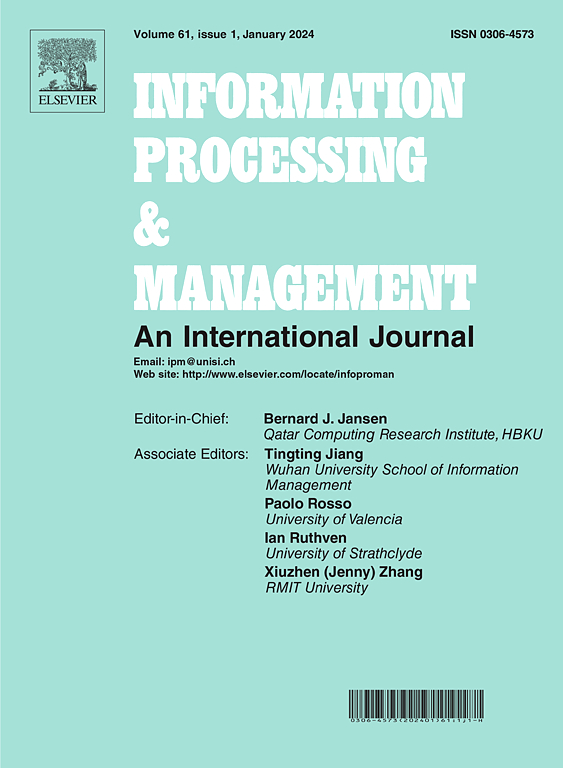基于时间邻居序列的电子商务平台可解释垃圾邮件组检测
IF 6.9
1区 管理学
Q1 COMPUTER SCIENCE, INFORMATION SYSTEMS
引用次数: 0
摘要
有组织的垃圾邮件发送团体合作操纵评论以获取非法收益,对在线平台构成重大挑战。介绍了一种基于时间邻居序列的可解释垃圾邮件组检测方法TNSGD。首先,我们过滤高怀疑的审稿人,以降低共同审稿人时间网络中的节点复杂度,优化检测过程。其次,利用这些筛选过的评审者构建一个共同评审时间网络,生成捕获时间聚合和关系特征的时间邻居序列,形成候选组;然后使用组垃圾邮件指示器和启发式条件对这些候选组进行分类,以描述最终的垃圾邮件发送者组。TNSGD在精度和F1分数上都超过了基线方法,其中亚马逊的精度和F1分数分别提高了4%和3%,Yelp的精度和F1分数分别提高了39%和31%。此外,TNSGD将计算复杂度显著降低至1/85和1/7。此外,我们还从模型和结果两个角度对TNSGD进行了解释。我们为模型解释设计了一个透明的检测过程,以确保每一步都具有明确的物理意义。对于结果解释,我们提供了检测到的垃圾邮件发送者群体的时空和进化特征的可解释可视化,为改进未来的检测模型提供了有价值的见解。本文章由计算机程序翻译,如有差异,请以英文原文为准。
Temporal Neighbor Sequence-based Interpretable Spammer Groups Detection on E-commerce platform
Organized spammer groups collaborate to manipulate reviews for illicit gains, posing significant challenges to online platforms. This paper introduces a Temporal Neighbor Sequence-based Interpretable Spammer Group Detection method called TNSGD. First, we filter high-suspicious reviewers to reduce node complexity in the co-review temporal network, optimizing the detection process. Second, a co-review temporal network is constructed using these filtered reviewers, generating temporal neighbor sequences that capture temporal aggregation and relational features to form candidate groups. These candidate groups are then classified using group spam indicators and heuristic conditions to delineate the final spammer groups. TNSGD surpasses baseline methods with notable improvements in Precision and F1 scores, including enhancements of 4% and 3% for Amazon and 39% and 31% for Yelp, respectively. Additionally, TNSGD significantly reduces computational complexity to 1/85th and 1/7th. Furthermore, we provide interpretations of TNSGD from two perspectives: model and result. We devise a transparent detection process for model interpretation to ensure each step has a clear physical significance. For result interpretation, we offer interpretable visualizations of the temporal–spatial and evolutionary characteristics of the detected spammer groups, providing valuable insights for refining future detection models.
求助全文
通过发布文献求助,成功后即可免费获取论文全文。
去求助
来源期刊

Information Processing & Management
工程技术-计算机:信息系统
CiteScore
17.00
自引率
11.60%
发文量
276
审稿时长
39 days
期刊介绍:
Information Processing and Management is dedicated to publishing cutting-edge original research at the convergence of computing and information science. Our scope encompasses theory, methods, and applications across various domains, including advertising, business, health, information science, information technology marketing, and social computing.
We aim to cater to the interests of both primary researchers and practitioners by offering an effective platform for the timely dissemination of advanced and topical issues in this interdisciplinary field. The journal places particular emphasis on original research articles, research survey articles, research method articles, and articles addressing critical applications of research. Join us in advancing knowledge and innovation at the intersection of computing and information science.
 求助内容:
求助内容: 应助结果提醒方式:
应助结果提醒方式:


